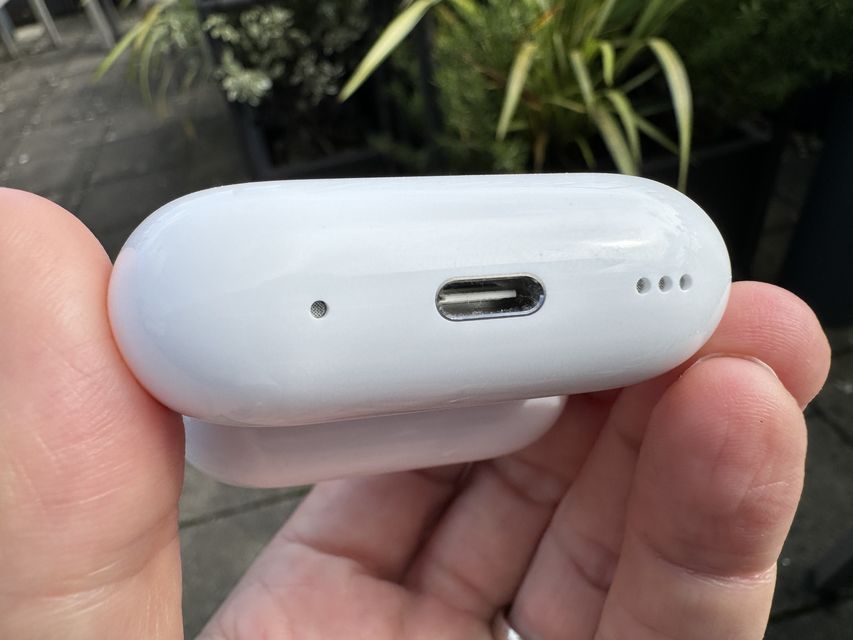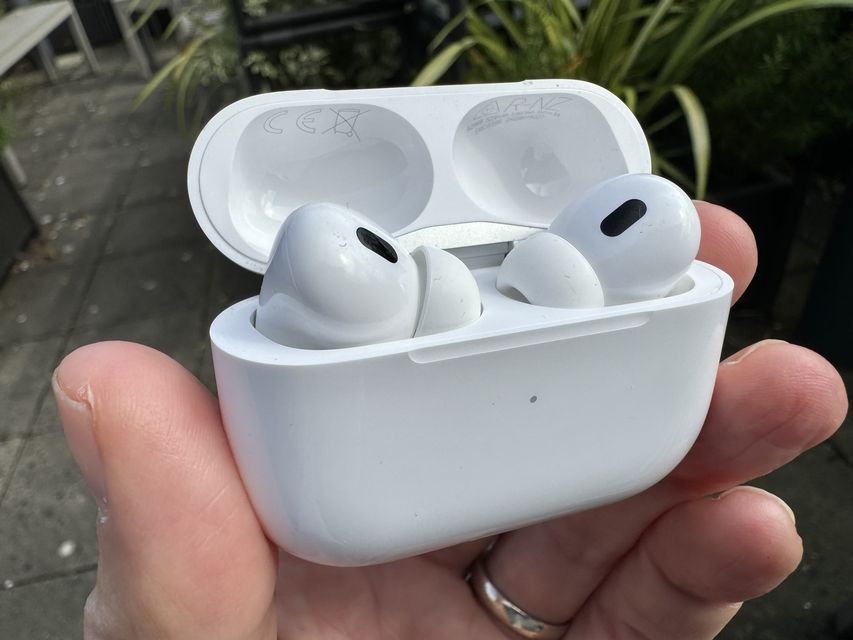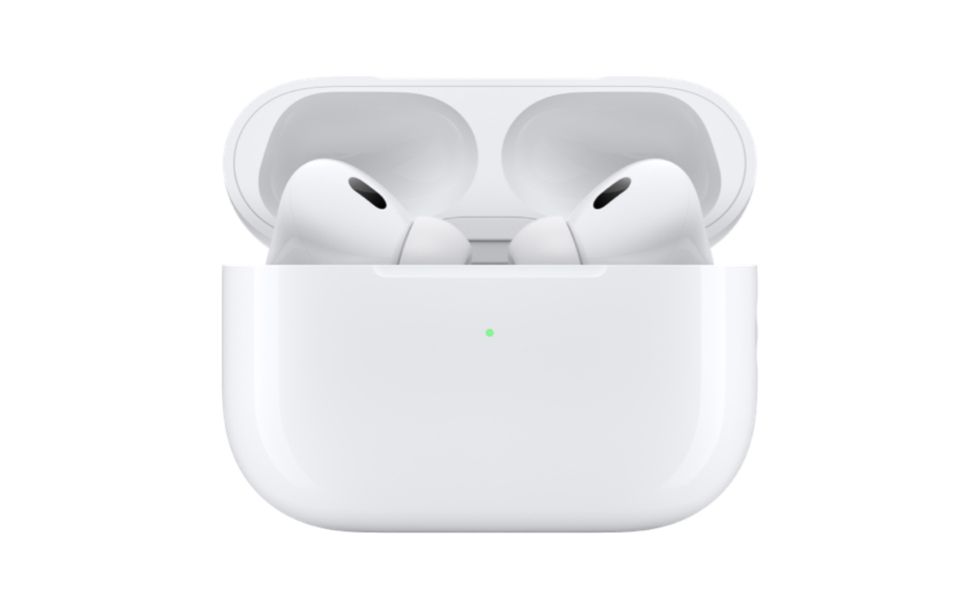Apple has updated its flagship wireless buds with USB-C. But there are other audio quality benefits also included with iOS 17.
The main differences are that it’s now powered by a USB-C cable instead of Apple’s ‘Lightning’, you can charge it directly from your iPhone for the first time. and there’s new audio formatting that’s compatible with the upcoming Vision Pro headset.
But it does also benefit from the audio feature upgrades that come to all AirPods Pro (and to a lesser extent, regular AirPods) in the iOS 17 update for iPhones, more of which I’ll discuss below.
My testing over the last few days shows that, from a sound quality perspective, it’s very similar to its Lighting predecessor (which I own and rate as the best in the market).
Other than the USB-C change, there’s physically only one other difference — a slightly better dust-resistance rating of IP54.
Even though the USB-C switch was mostly brought about by EU regulation on universal charging cable requirements, the updated AirPods Pro 2 make one extra use out of it — you can now charge the buds directly from your iPhone.
To be clear, you were always able to charge them from laptops or larger devices; but to do it from an iPhone is a new feature.
Unfortunately, the new AirPods Pro 2 aren’t noticeably faster to charge over USB-C, which is a bit of a surprise.
And they still can’t wirelessly charge off the back of an iPhone, a feature I think might be coming down the line as Apple’s competitors have had it for some time.
Even still, battery life remains excellent at five to six hours usage per in-case charge, with 30 hours’ reserve in the charging case.
There is one other actual audio difference between these new ones and their Lightning counterparts, a benefit which won’t be realisable to anyone for at least six months and, even then, only to a very small cohort of people.
The new AirPods Pro 2 have lossless audio specifically designed for Apple’s mixed reality Vision Pro headset, a device that becomes available, Apple says, in early 2024.
In terms of their general audio performance, everything else about the AirPods Pro 2 is almost exactly the same as the pairs that come with the Lightning port. I’ve reviewed these before, so I won’t go into it in depth. But suffice to say that the quality is about the best you can get in the ear buds market. What’s particularly impressive is the active noise cancellation, which is the closest I’ve experienced to overhead headphones noise cancellation. They’re especially good at dulling loud, sharp noises.
There are some audio improvements that iOS 17 brings to both sets of second generation AirPods Pro buds (though not, it appears the first generation of AirPods Pro, which don’t have Apple’s updated H2 chip).
The first of these is called ‘adaptive audio’, which tries to mix the benefits of noise cancellation and transparency mode (which is supposed to allow you hear what’s around you for safety, such as when you’re on a bike or want to talk to someone briefly). This is a hard trick to pull off, as noise cancellation and transparency mode are, in theory, supposed to do directly opposing things.
It seems to work pretty well. To my ears, it mostly seems to cut down on the ‘white’ and ‘brown’ noise while allowing slightly sharper sounds and some voices through, though not in a jarring way. Like being on a plane and not hearing the engines, but being able to hear the steward ask whether you’d like tea or coffee.
The second feature is called ‘conversational awareness’. It’s supposed to cater for a situation where you’re listening to something, but then have a quick physical verbal exchange with someone in front of you. The new feature boosts the volume of the human voice in front of you and reduces both the sound of the content you’re listening to and all other background noise for your conversational exchange.
This definitely works, although it takes a second or two to kick in, so you might miss the first few words of the exchange. The mode finishes three or four seconds after your last verbal exchange and returns your content volume to what it was (note that the content doesn’t pause during this period, but plays at a much lower volume).
It’s worth mentioning that if you have this on and start singing along out loud to a song, or mumbling to yourself for some reason, the feature will kick in and reduce the audio as if you’re having a conversation with someone.
Lastly, there’s a new ‘personalised volume’ feature that claims to use machine learning to figure out what your preferred listening experience is over time. I’ll report back on this when I’ve used it for a few weeks.
There are a few other features from iOS 17 for AirPods worth mentioning, such as the ability to mute or unmute yourself on a call by squeezing the stalk. (They already allowed you to pause or resume playback, answer or terminate calls, and control volume.)
There’s also an improvement in device-switching between say, an iPhone and an iPad or Mac (or vice versa) with the AirPods Pro.
Like other AirPods, as soon as you pair it to one of your Apple devices, it will automatically switch to other Apple devices you own. This is probably one of the handiest features about recent AirPods releases, but in my experience, it has been hit-and-miss with the previous AirPods Pro; I often have to manually intervene to make sure the new device is connected to my AirPods Pro.
In keeping with Apple’s currency-related price cuts in eurozone countries, the new updated model is cheaper (by €20) than its predecessor, at €279. You get a USB-C to USB-C cable in the box, as well as replacement ear tips in different sizes.
In summary, these remain the best wireless buds you can buy for under €300. But if you already have a Lightning pair, you’ll get a lot of the extra audio benefits anyway.








